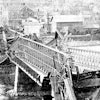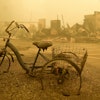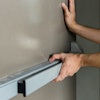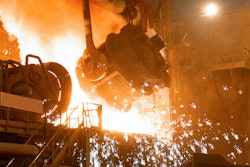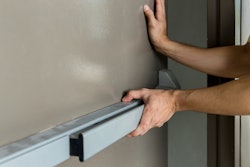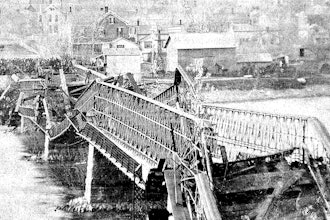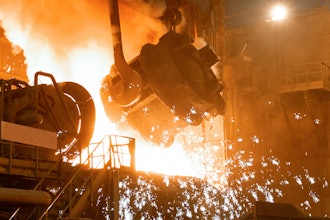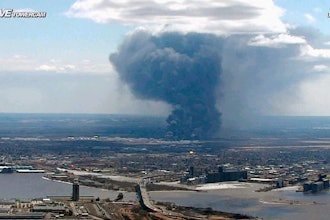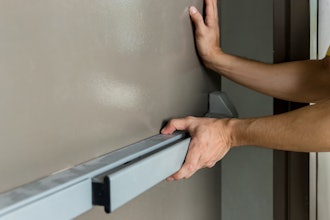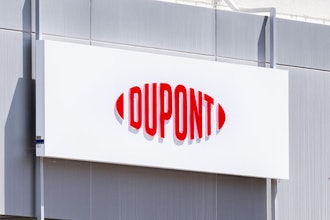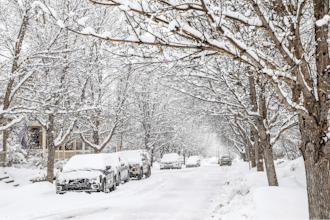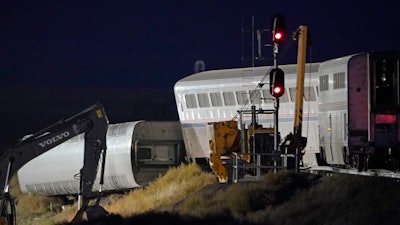
JOPLIN, Mont. (AP) — Federal investigators are seeking the cause of an Amtrak train derailment near a switch on tracks in the middle of vast farmland in far northern Montana that killed three people and left seven hospitalized over the weekend.
The westbound Empire Builder was traveling from Chicago to Seattle when it left the tracks about 4 p.m. Saturday near Joplin, a town of about 200. Amtrak spokesman Jason Abrams said the train was carrying about 141 passengers and 16 crew members. It had two locomotives and 10 cars, eight of which derailed, with some tipping onto their sides.
Trevor Fossen was first on the scene. The Joplin resident was on a dirt road near the tracks Saturday when he saw “a wall of dust” hundreds of feet high.
“I started looking at that, wondering what it was and then I saw the train had tipped over and derailed,” said Fossen, who called 911 and started trying to get people out. He called his brother to bring ladders for people who couldn’t get down after exiting through the windows of cars resting on their sides.
Passenger Jacob Cordeiro from Rhode Island was traveling with his father to Seattle to celebrate his college graduation.
“I was in one of the front cars and we got badly jostled, thrown from one side of the train to the other,” he told MSNBC. He said the train car left the tracks near a switch where two tracks narrow to one but did not fall over.
“I’m a pretty big guy and it picked me up from my chair and threw me into one wall and then threw me into the other wall,” Cordeiro said.
Railroad safety expert David Clarke, director of the Center for Transportation Research at the University of Tennessee, said the two locomotives and two cars at the front of the train reached the switch and continued on the main track, but the remaining eight cars derailed. He said it was unclear whether some of the last cars moved onto the second track.
“Did the switch play some role? It might have been that the front of the train hit the switch and it started fish-tailing and that flipped the back part of the train,” Clarke said.
Another possibility was a defect in the rail, Clarke said, noting that regular testing doesn’t always catch such problems. He said speed was not a likely factor because trains on that line have systems that prevent excessive speeds and collisions.
Allan Zarembski, director of the University of Delaware’s Railway Engineering and Safety Program, said he didn’t want to speculate but suspected the derailment stemmed from an issue with the train track, equipment, or both.
Railways have “virtually eliminated” major derailments by human error after the implementation of positive train control nationwide, Zarembski said.
Matt Jones, a BNSF Railway spokesman said at a news conference that the track where the accident occurred was last inspected on Thursday.
A 14-member National Transportation Safety Board team including investigators and railroad signal specialists will be looking into the cause of the accident on a BNSF Railway track, NTSB spokesman Eric Weiss said.
Law enforcement on Sunday said the officials from the NTSB, Amtrak and BNSF were at the accident scene just west of Joplin, where the tracks cut through vast, golden brown wheat fields that were recently harvested. Several large cranes were brought to the tracks that run roughly parallel to U.S. Highway 2, along with a truckload of gravel and new railroad ties.
The site is about 150 miles (241 kilometers) northeast of Helena and about 30 miles (48 kilometers) from the Canadian border.
Amtrak CEO Bill Flynn expressed condolences to those who lost loved ones and said the company is working with the NTSB, Federal Railroad Administration and local law enforcement, sharing their “sense of urgency” to determine what happened.
Because of the derailment, Sunday’s westbound Empire Builder from Chicago was terminating in St. Paul, Minnesota, and the eastbound train was originating in Minnesota.
Montana Gov. Greg Gianforte said BNSF was readying replacement track for when the NTSB gives the go-head. “BNSF has assured me they can get the line up and running in short order,” he said.
Most of those on the train were treated and released for their injuries, but five who were more seriously hurt remained at the Benefis Health System hospital in Great Falls, Montana, said Sarah Robbin, Liberty County emergency services coordinator. Two were in the intensive care unit, a hospital spokeswoman said.
Another two people were at Logan Health, a hospital in Kalispell, Montana, spokeswoman Melody Sharpton said.
Liberty County Sheriff Nick Erickson said the names of the dead would not be released until relatives are notified.

